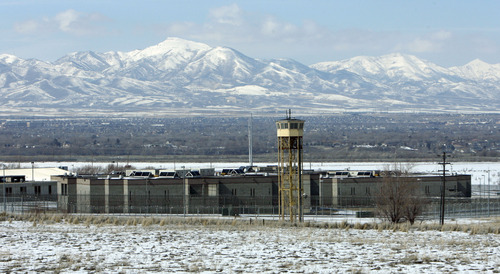This is an archived article that was published on sltrib.com in 2013, and information in the article may be outdated. It is provided only for personal research purposes and may not be reprinted.
The only conceivable defense to the charge that corrections officers at the Utah State Prison flooded the wing that houses mentally ill inmates with eye-stinging, skin-burning tear gas is that it didn't really happen the way the ACLU of Utah says it did.
If the ACLU's version of events — outlined in a civil suit filed Monday in federal court — is even partly accurate, then there is no excuse for the actions taken in the prison's Olympus wing on Aug. 3, 2011. And, rather than fight the charges in court, state corrections officials should waste no time in fessing up and laying down some firm policies that will prevent such an outrage from happening again.
State officials, as is normally the case when legal action has commenced, aren't talking. But the lawsuit alleges that corrections officers became impatient when one — one — inmate in the prison courtyard refused to return to his cell.
Guards allegedly fired tear gas, which quickly filled the air in nearby cell blocks. The inmates in those cell blocks, trapped in their cells, did not know what was happening. Some reasonably suspected that the building was on fire and began screaming, kicking and pressing emergency buttons in the hope that they would be let out.
They weren't. Not only that but, according to the filing, officers ignored inmates' complaints about being burned by the tear gas and mocked those who said they had been injured. Officers discouraged inmates from seeking medical care. And telephones that provided the prisoners' only link to the outside world were cut off for the next two days.
It must be stipulated at this point that being a prison corrections officer is one of the most difficult and thankless jobs on earth. This must be doubly true in facilities where inmates are not only criminals, but also mentally ill.
All the more reason why any corrections department must outline, explain and enforce specific standards for dealing with recalcitrant inmates in the least damaging way possible. And, while the use of tear gas may be indicated in cases of large riots, it hardly seems reasonable to employ such an imprecise tool when only one inmate has transgressed.
The argument that using chemical weapons is a good idea in this case because it would avoid the need for physical contact between jailer and inmate, tentatively offered the other day by a corrections official, makes little sense.
These events, as described by the ACLU, suggest that both inmates and corrections officers were let down by policies and training that failed in this situation. Best for the department to come clean, and explain in detail how it will do a better job in the future.



